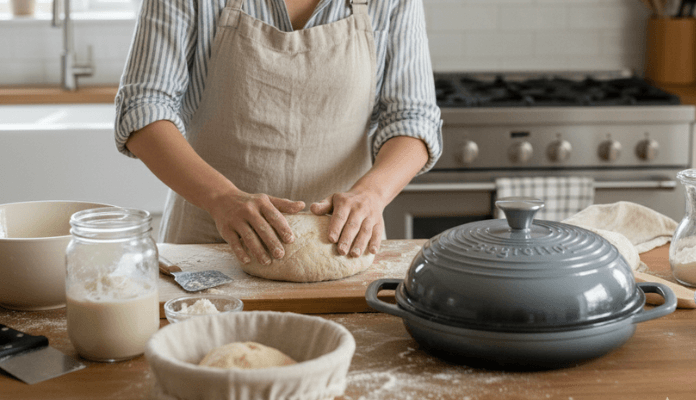
Troubleshooting Common Issues When Baking in Cast Iron Bread Ovens
Even the best loaves have bad days. Maybe your crust came out pale, your bread collapsed, or the center stayed gooey despite a perfect rise. Don’t panic. Every great baker learns through mistakes—and a cast iron bread oven like the Segretto rewards those who pay attention.
Here’s your quick-reference guide to diagnosing, fixing, and preventing the most common cast-iron baking mishaps.

1. Pale Crusts: When the Color Doesn’t Match the Aroma
Symptoms: Bread bakes through but looks dull or light, without that deep golden hue.
Possible Causes:
-
Oven not hot enough at loading time
-
Lid left on too long (trapping steam beyond the crust-forming stage)
-
Low sugar content in dough (nothing to caramelize)
-
Too much flour dusted on top
Fix:
-
If the crust is pale → then increase bake temperature by 15–25 °F or preheat longer (45 min minimum for cast iron).
-
If crust lacks shine → then remove lid for the last 10–15 min to let dry heat brown it.
-
If dough is lean → then brush with water or milk before baking for better color.
2. Collapsed Loaf: The Rise That Went Too Far
Symptoms: Loaf rises beautifully, then caves inward during or after baking.
Possible Causes:
-
Over-proofed dough (yeast exhausted before baking)
-
Too much hydration (weak gluten structure)
-
Insufficient oven spring (oven not fully preheated)
Fix:
-
If the loaf deflates after scoring → then shorten proof time next bake; dough should spring back slightly when poked.
-
If the collapse happens mid-bake → then check oven temp; preheat cast iron fully to trap heat for a strong initial rise.
-
If the dough feels too loose → then reduce water by 2–5 %.
3. Stuck Loaf: The Cast Iron Cling
Symptoms: The bottom crust or sides adhere to the pot, tearing your perfect loaf apart.
Possible Causes:
-
Insufficient flour, cornmeal, or parchment under dough
-
Moisture buildup from steam condensation
-
Rough or unseasoned cast iron surface
Fix:
-
If it sticks once → then use parchment next time.
-
If it sticks repeatedly → then re-season or lightly oil the base before preheating.
-
If condensation forms → then open lid a few seconds before removing to release excess steam.
4. Underbaked Center: The Gooey Mystery
Symptoms: Crust looks perfect, but the inside stays doughy or gummy.
Possible Causes:
-
Oven temperature too high—crust sets before interior cooks
-
Insufficient baking time
-
Dough too dense or wet
Fix:
-
If the interior is gummy → then lower temperature by 15–25 °F and extend bake time by 10 min.
-
If bottom burns while center stays raw → then place the oven on a higher rack.
-
If dough is heavy → then fold more during bulk fermentation to build strength.
5. Quick Reference: Your “If This, Then That” Checklist
| Problem | Likely Cause | Quick Fix |
|---|---|---|
| Pale crust | Not hot enough / lid on too long | Preheat longer, remove lid earlier |
| Collapsed loaf | Over-proofed or weak gluten | Shorten proof, reduce water |
| Stuck loaf | No parchment / moisture | Use parchment, re-season base |
| Undercooked center | Temp too high / bake too short | Lower heat, extend time |
6. A Final Word: Learn from the Loaf
Each “failed” bake is a field note in your bread-making journey. The cast iron oven—steady, patient, and brutally honest—tells you exactly what the dough needed. Listen to it, tweak your process, and soon every loaf will sing with color, rise, and flavor.
Perfection isn’t magic. It’s observation, adjustment, and a touch of steam.
